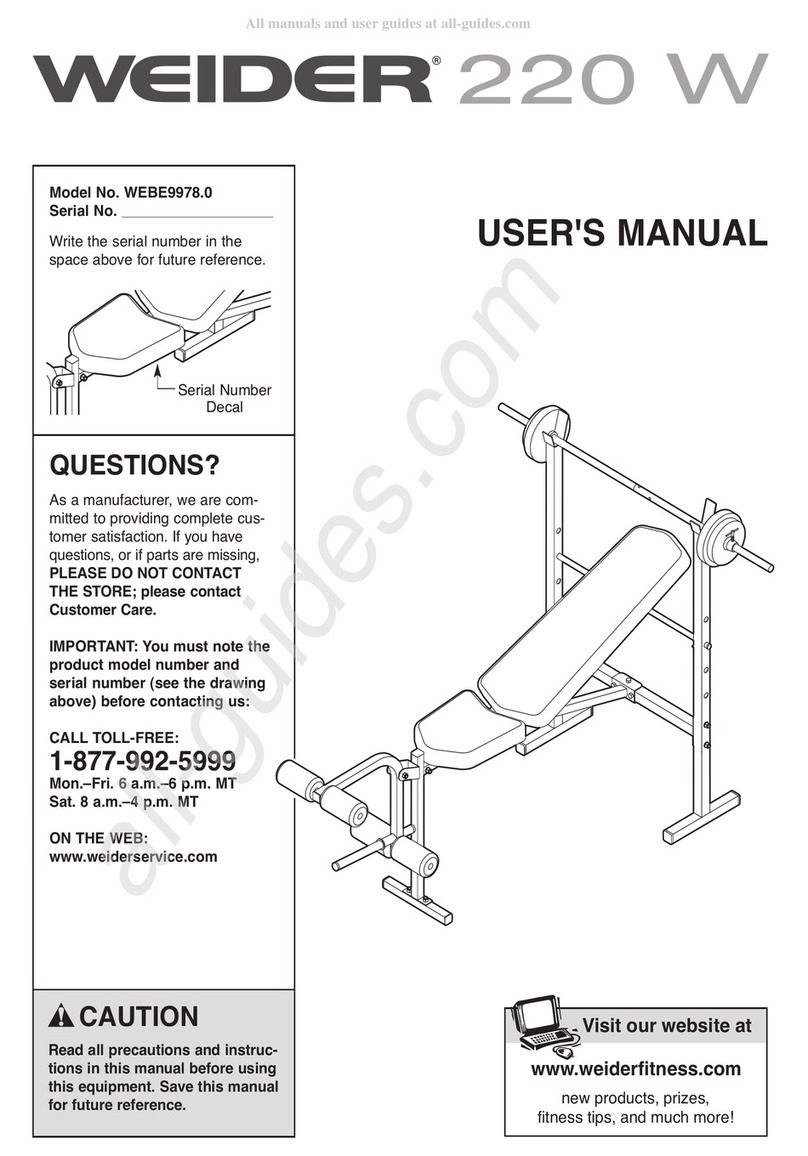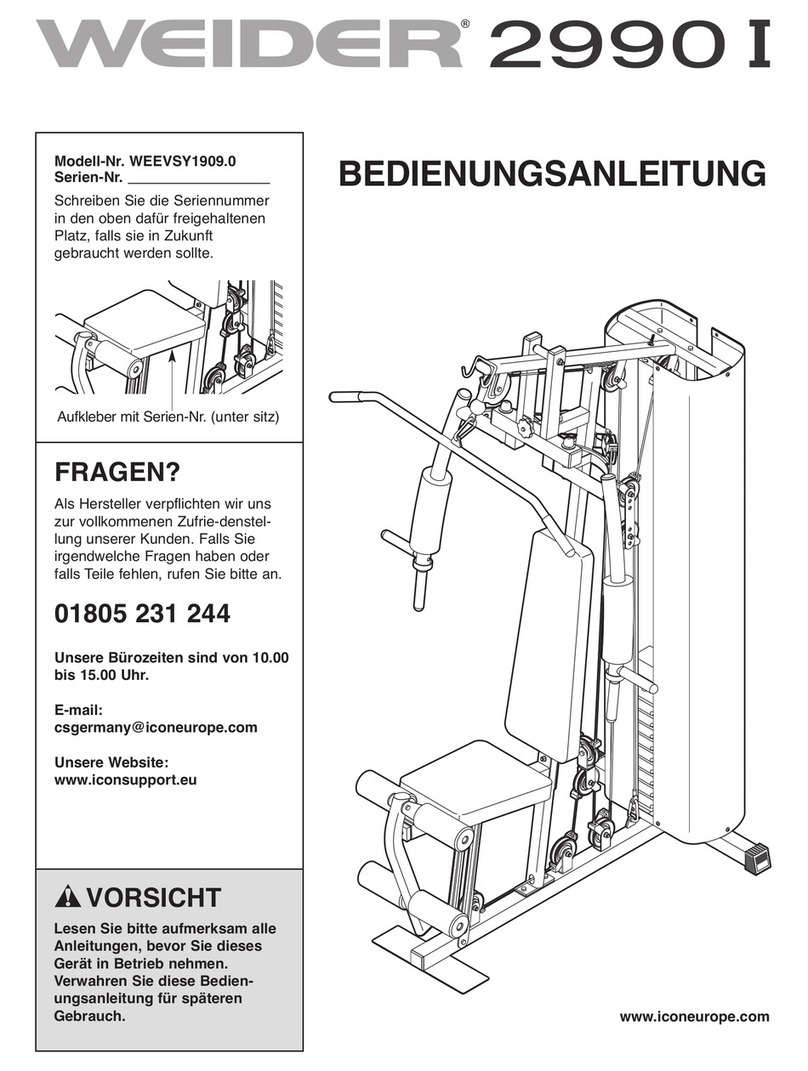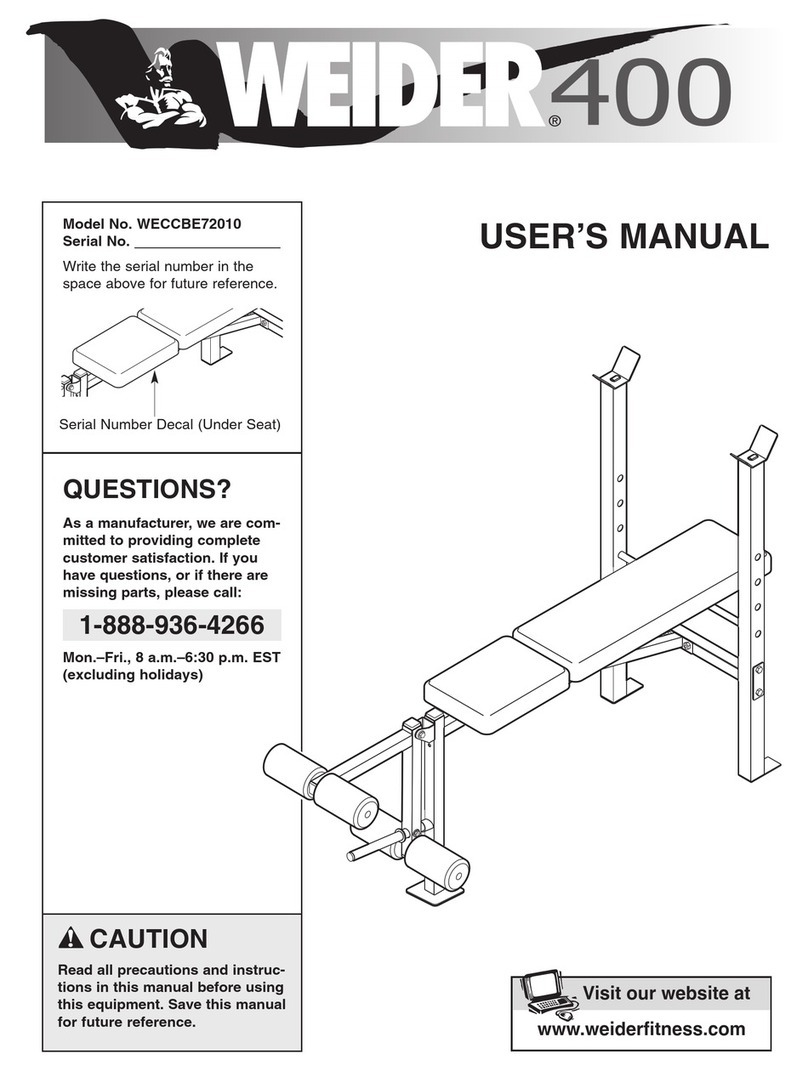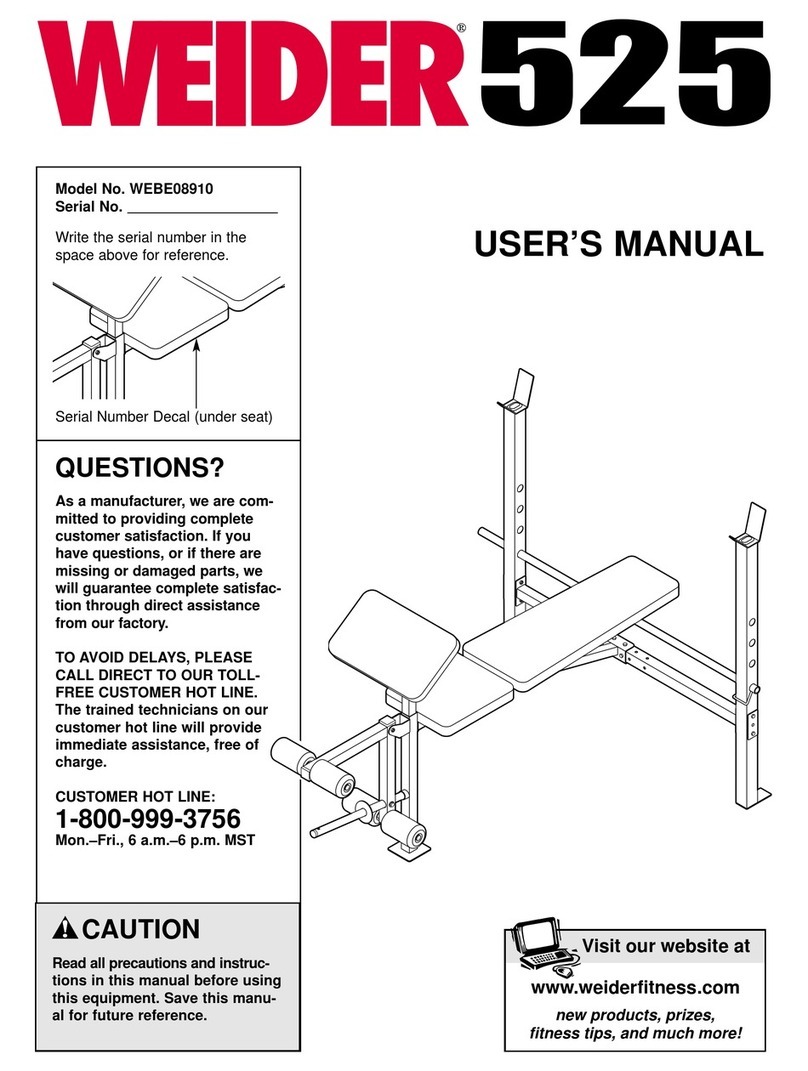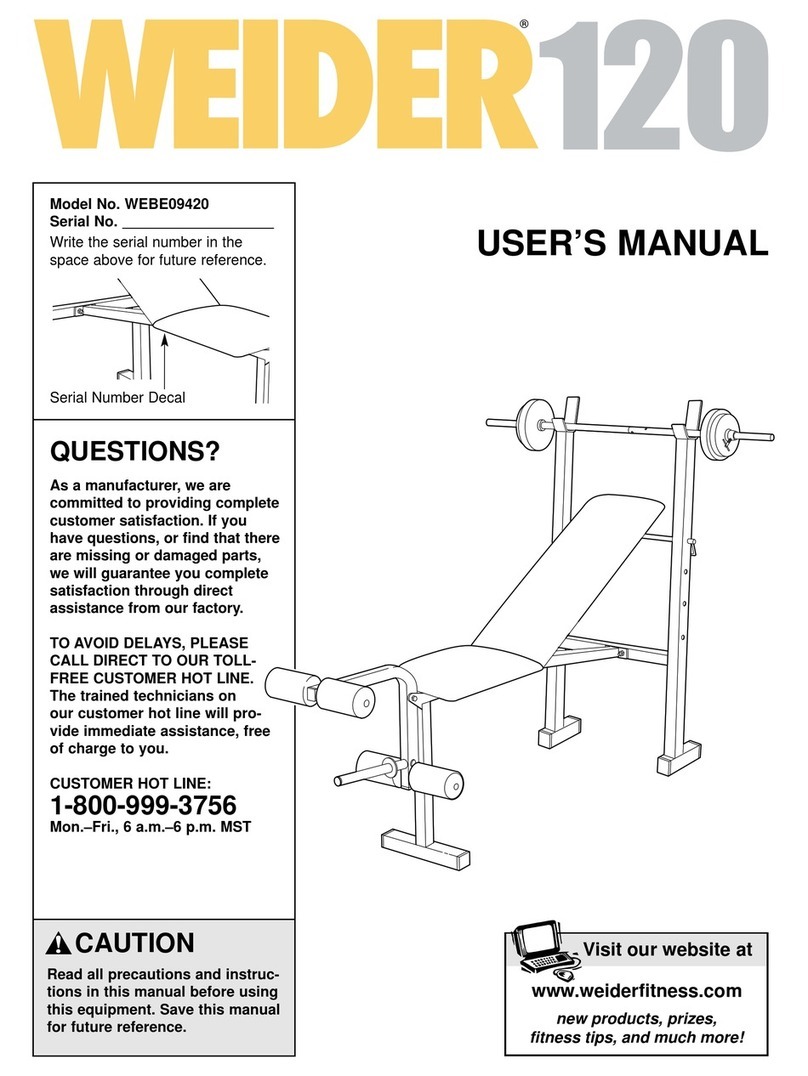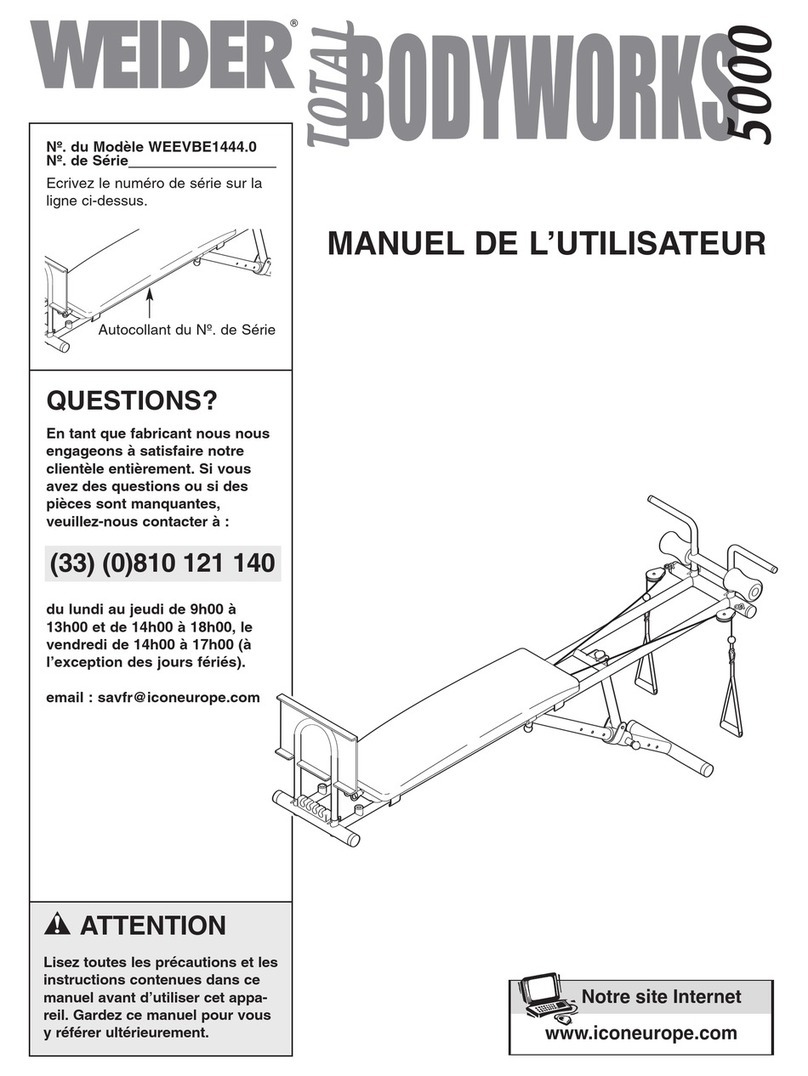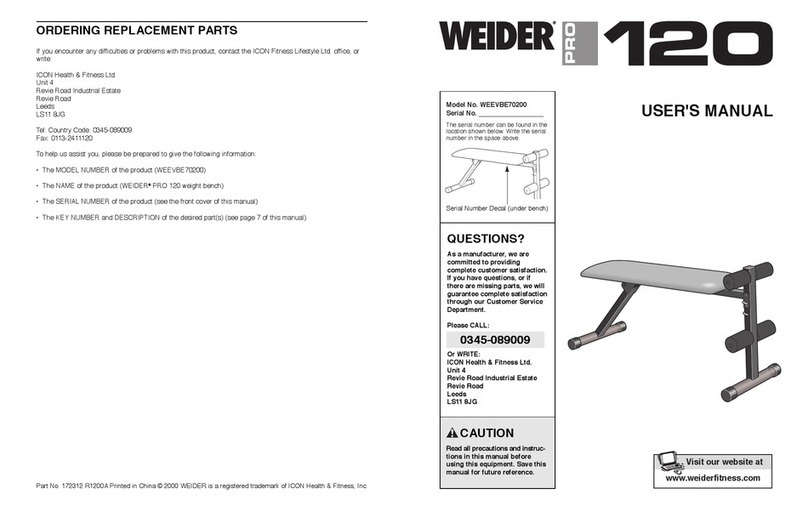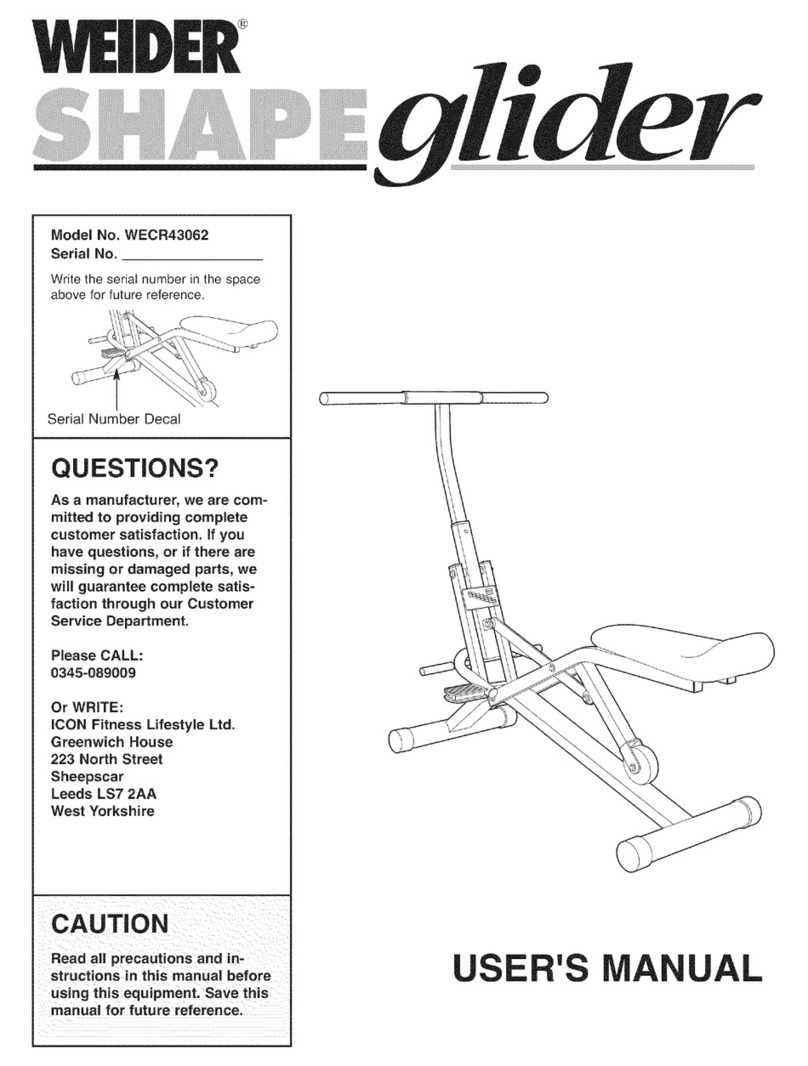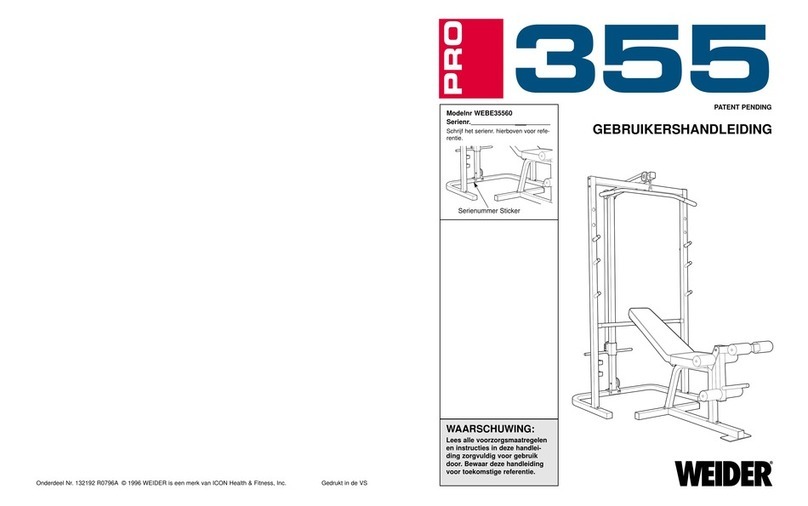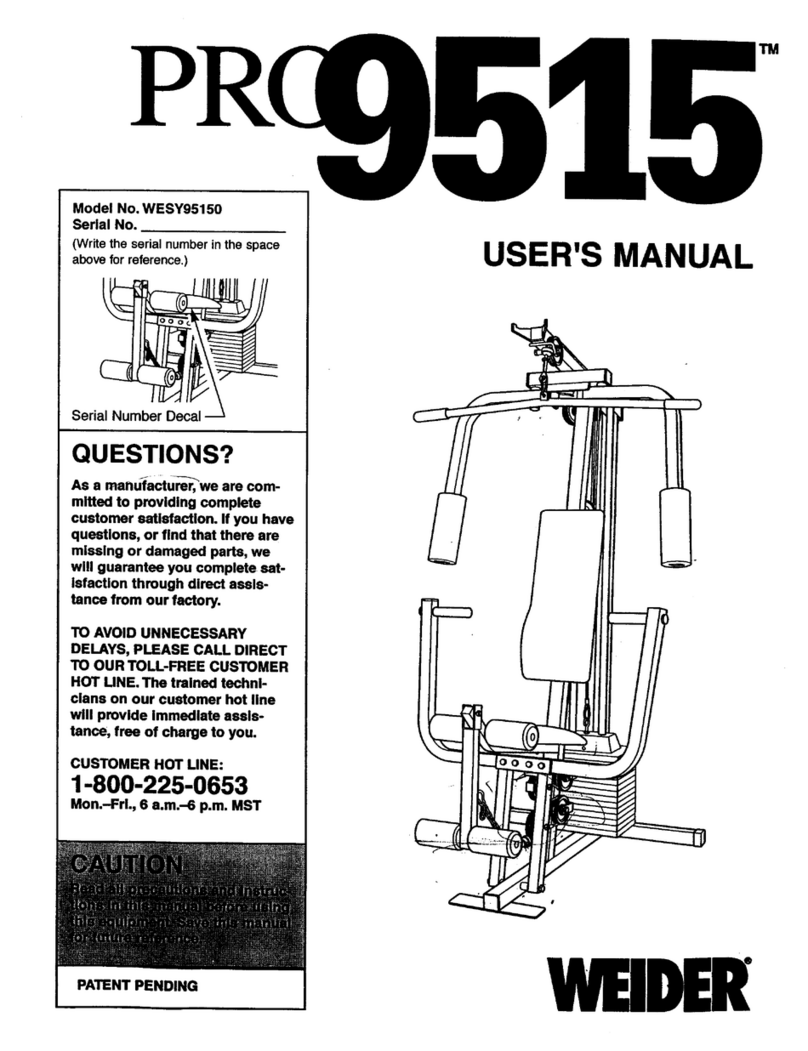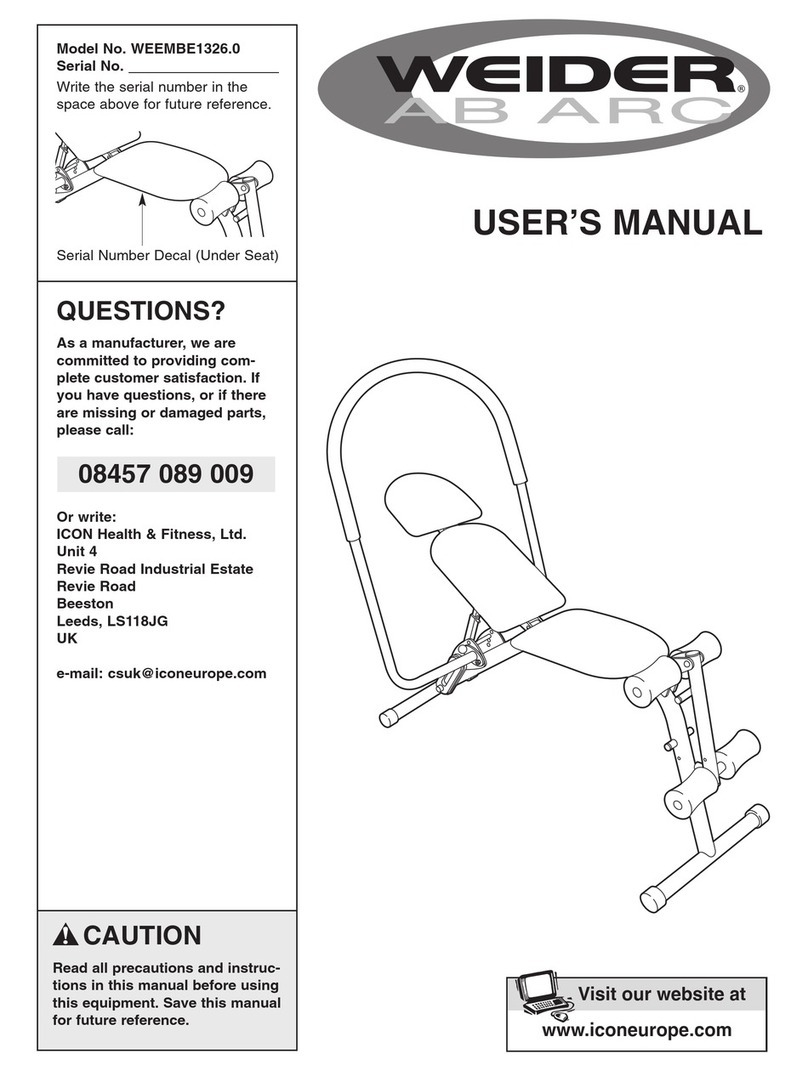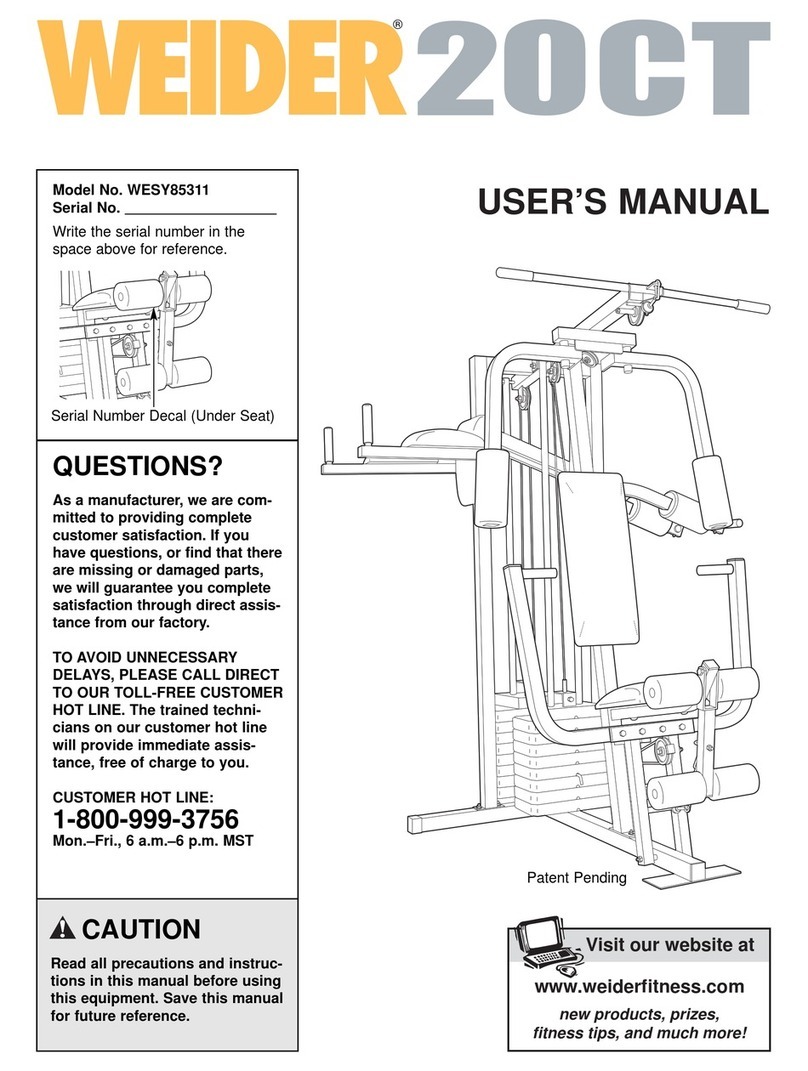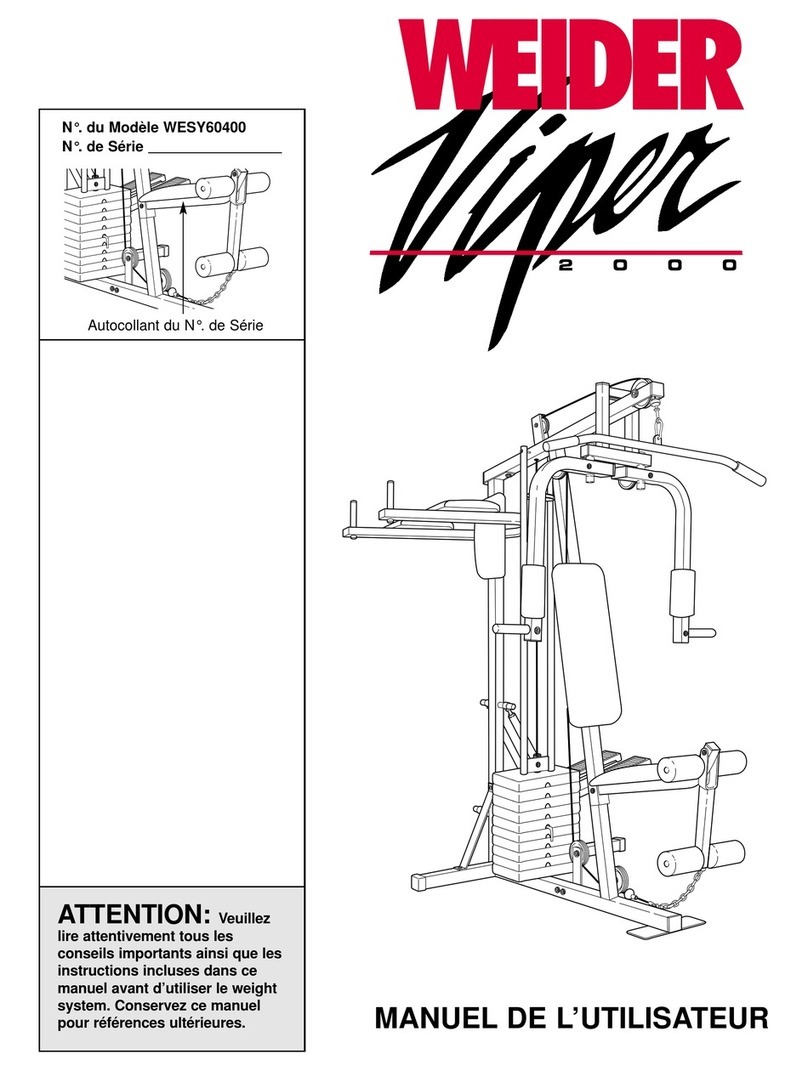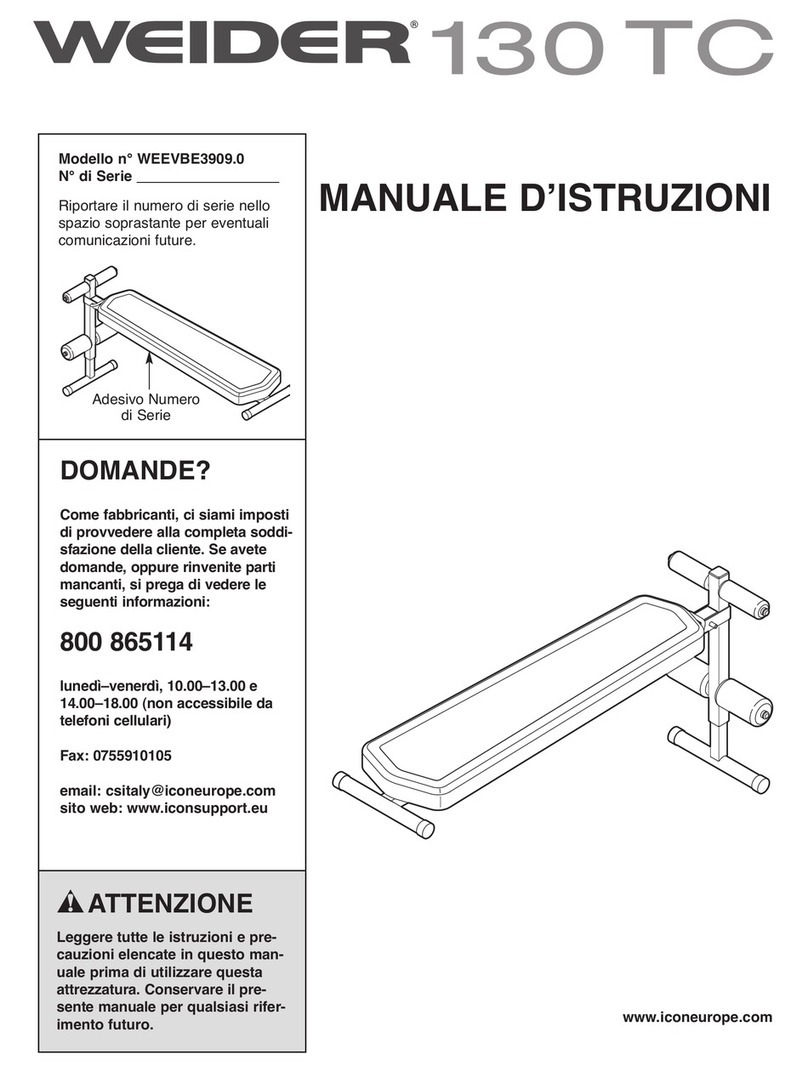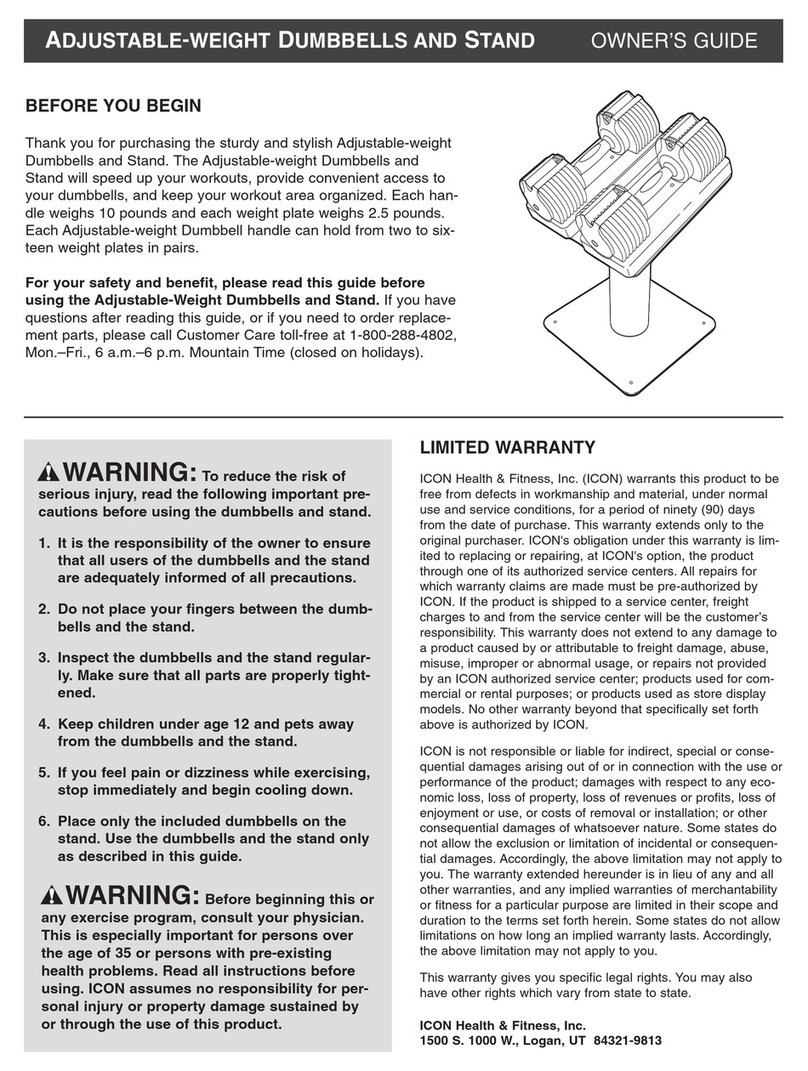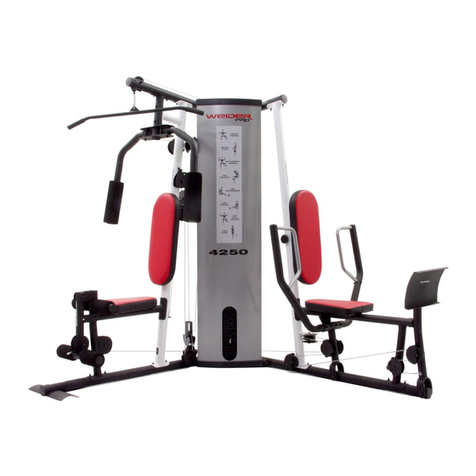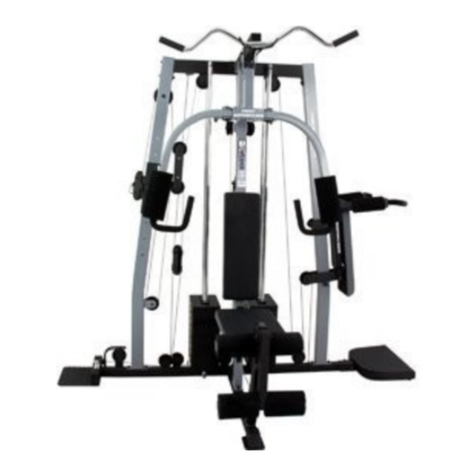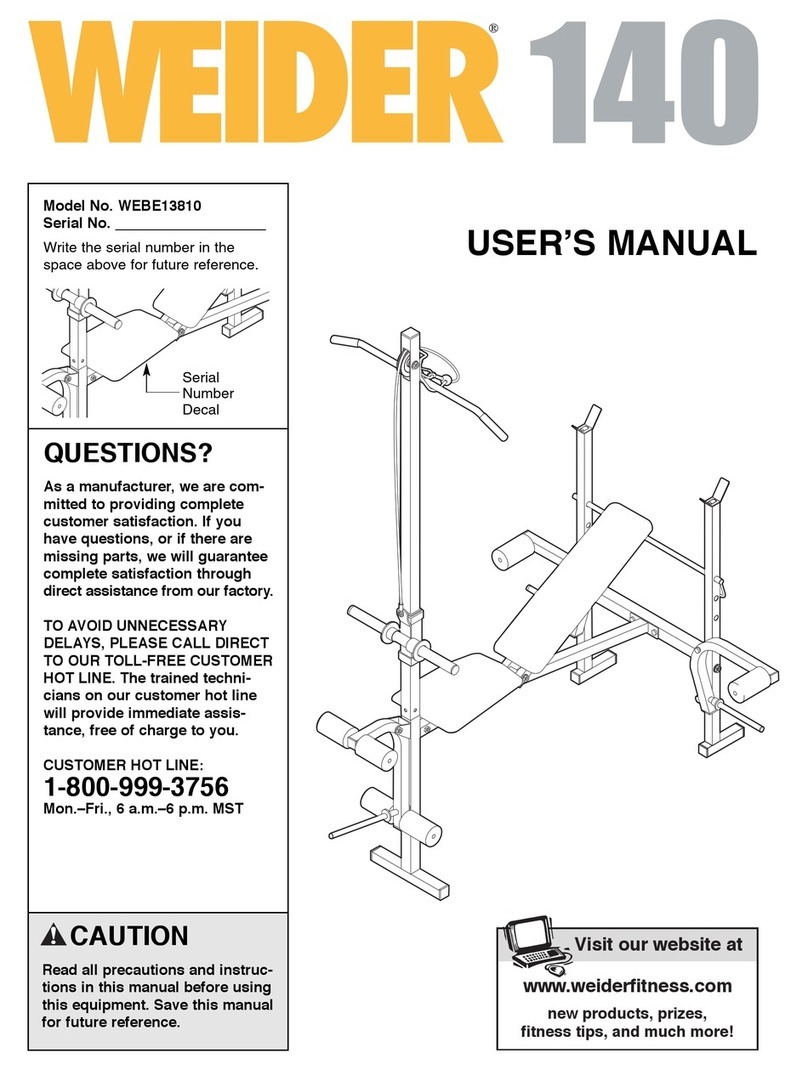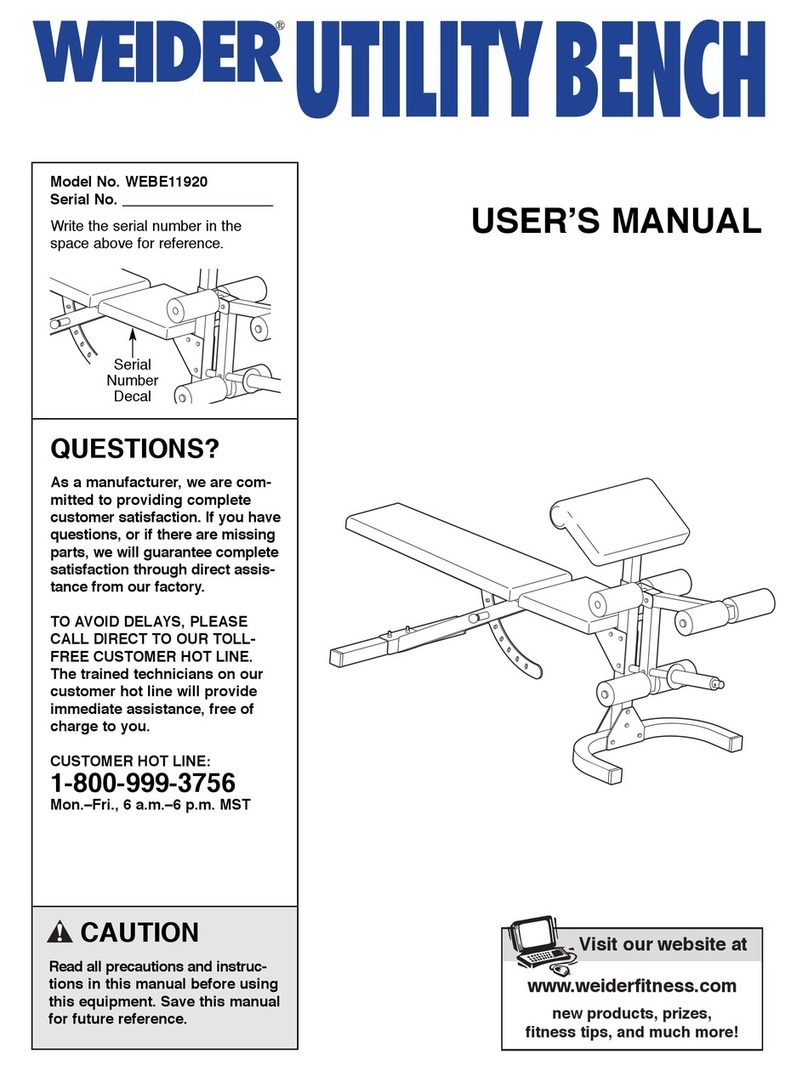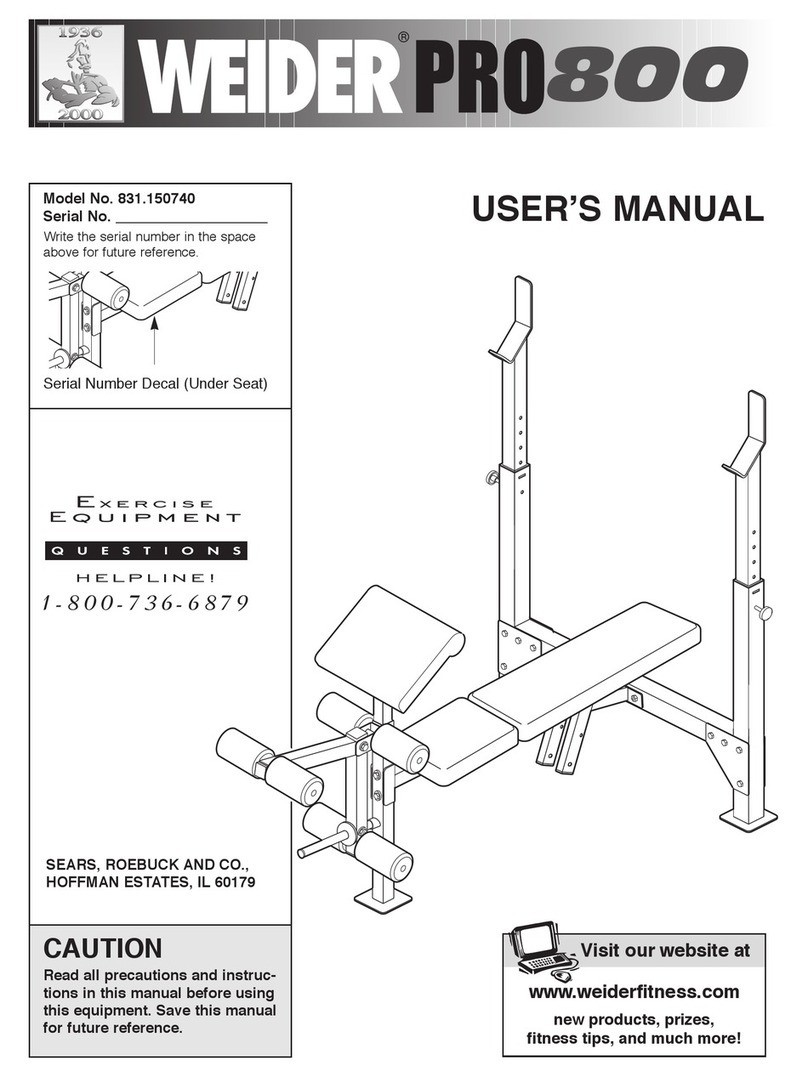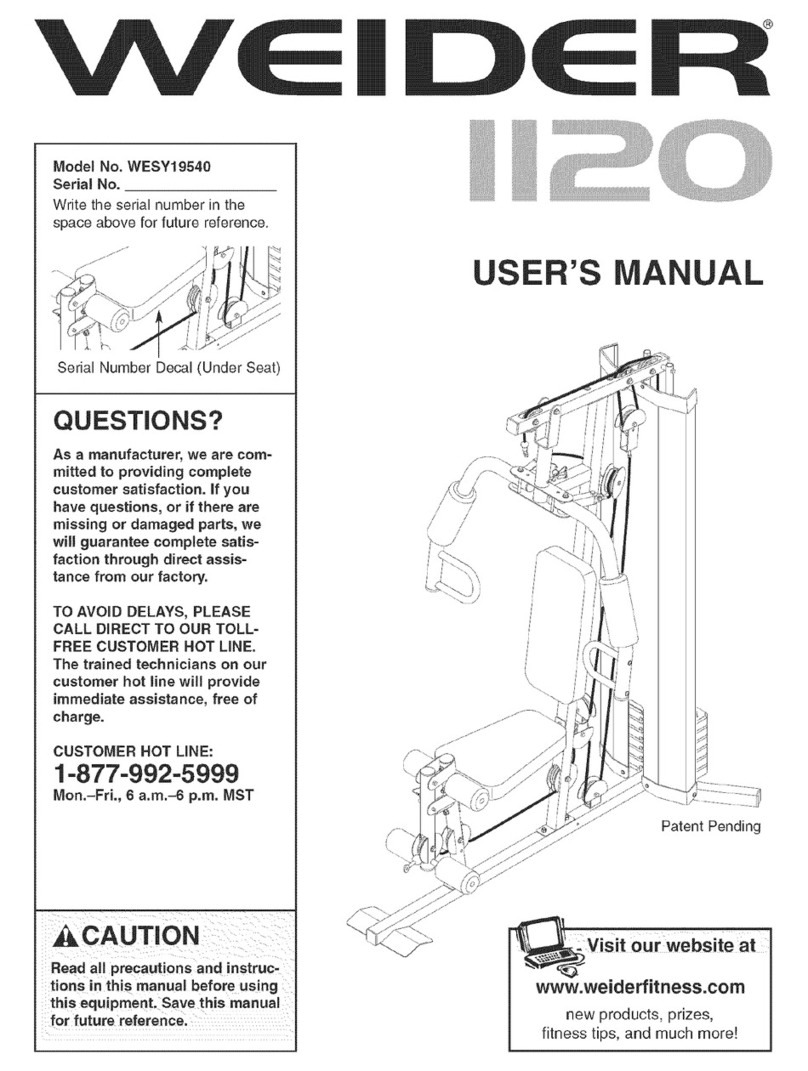TABLE OF CONTENTS
IMPORTANT PRECAUTIONS ............................................................. 2
BEFORE YOU BEGIN .................................................................. .3
PART IDENTIFICATION CHART .......................................................... .4
ASSEMBLY ........................................................................... 5
ADJUSTING.THE WELDER PRO 205 ........................................................ 9
EXERCISE GUIDELINES ................................................................ 11
PART MST ........................................................................... 14
EXPLODED DRAWING ................................................................. 15
ORDERING REPLACEMENT PARTS ................................................ Back Cover
FULL 90 DAY WARRANTY ....................................................... Back Cover
IMPORTANT PRECAUTIONS
WAHPlINU: io,reauce me riSKOXser pus Iniury; reap the lrollowln_ imDodant precautions befoi_._:_
using the weight bench.
1.,* Re_d all il'tstructions In this manuaJ_before._t_u.._Keep hands and feet away from movini] ,_arts_
' " using the,_welght bench.
"Always wear athleUc shoes for foot protec-
2. Use the weight bench only as de_ribecl]n "tion while'exercising.
this manual.
-10. The weight bench does not include weights. ,
3. Use the weight bench only on a level,surf.ace._,_'_,, The weight bench is designed to support a, ":
Cover the floor beneath, the weigh t_,benchJora_:_: maximum of 510 pounds, Including the User,L_
protection• .a weight bar and weights. Do not place more
':_=thano310 pounds, inc uding a weight bar and ,i
4.. Inspect and bghten all parts each _we|ghLs, on the we|eht rests. Do not olai:e -_,_
use,the we,ght bench. Replace an_ _-:--'more than 150 pounds on the leg lever_
part_ immediately. :._'_,_",_, _- .- -" ,. ..... ,_,.'-_',_'_
,",_:: _,+j_ l_.-When using the backrest'make sure that,the,
5. Keep small chddren ah'_ pets away,:_romi_J)_'_,_,,-adJustment tube is firmly seated in the '_',\=-_:,_
weight bench at all t.mes. ;,,adjustment brackets on the uprights. " , =_-
61 Always be.,su=re_,themjs-;_znequa!_.ap!ount_)f_._12.'lf you feal pain or dizziness at any time whlle ,___• . •.._, . ..., .._\ _.... -_, _
weight on each-side of_your barbel! (not_,_.," Lexercising; stop immediatslv and bealn cool_€
included) when you a_using IL ,:_:- ",- :=".._,_, ,_. :ing down. '., - -
,, _._
7.- When you are using the weight carrlage_ be, , 13.-:1t is the responsibility of the owner to ensure :',
sure there is an equal amount of weight on that all users of the weight bench are ade- :_¢',
each side of the weight tube. . .quately Informed of all precautions.. _:_?, =;.
WARNING. Bfffore beginning this or any exercise program;'consult your physician: This is es_l_;lly_
impo ,r,tantfor persons overthe age of _or persons with pre-existing hdalth pro'b!ems. Redid all'_._:
instruct!ons_fore usIng.,S .EARS assumes no*responsibility for personal injury or.property damaue_
sustained byor through the'use of this product•
2
